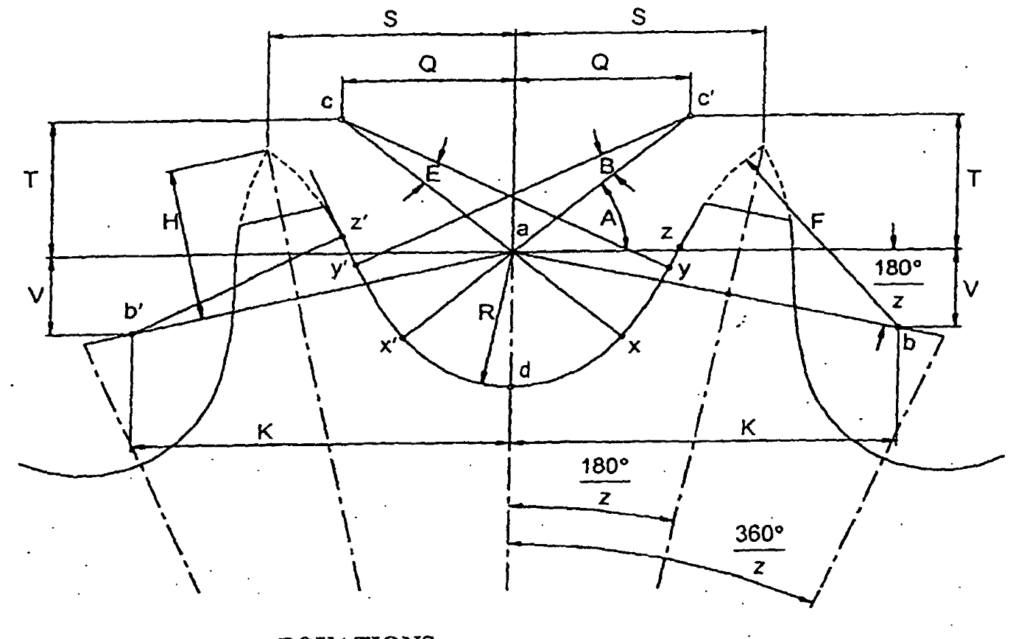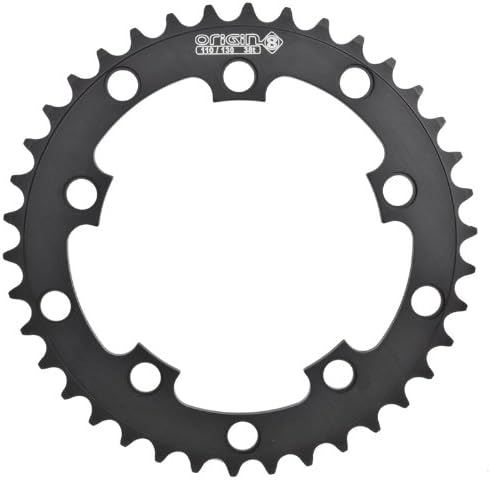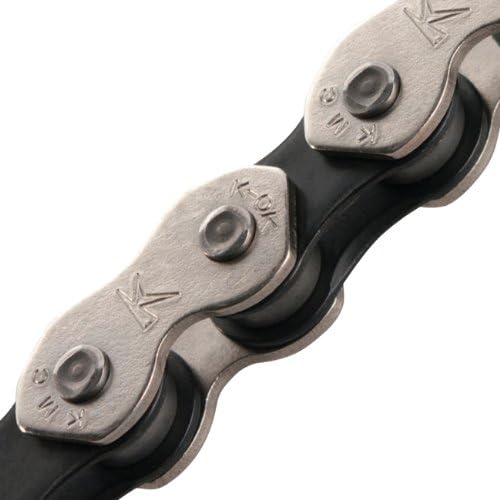
Let’s Get Started
So after a year I am definitely tired of spinning my pedals like I was running in a hamster wheel, I decided to switch things up to be more practical.
The following info on crankset length and chainring tooth count for stock Super73 Bikes (taken directly from their website):
Z1: 145mm/36T
S1: 145mm/36T
S2: 125mm/36T
R: 125mm/36T
RX: 125mm/36T
But before buying a new crankset and chainring it’s important to know what those numbers actually mean.
Chrankset Length

Crankset length is basically how long your pedal arms are. Getting a longer crankset will allow you to pedal a bit harder which is bad because you will notice an increase in how hard you have to pedal, but it’s good because you’re assisting your motors more meaning less stress on the motor which prolongs battery life and CAN SLIGHTLY increase range.
Other pros to a longer crankset is that on Super73 bikes that don’t have an adjustable seat, you can get a crank length that better suits your height. One thing to pay attention to with crankset length is how close your pedals will be to the ground.
A longer chainset on a bike as low as the S1 or the Z1 mean that when you lean the pedals will be closer to scrape on the ground. I am switching from a 145mm crankset to a 155mm crankset, so I am increasing the length of the pedal arms by 1.5cm (a very subtle amount).
Common crankset lengths are 160, 165, and 170. A lot of modders in the community often go with a 165mm cranklength because it is readily available and from asking around hasn’t really affected their ability to lean the bike when turning.
Chainring tooth count

Much like crankset length, chainring tooth count affects the amount of effort it take to propel your bike. Increasing your tooth count will increase the amount of force you have to use to turn the pedals, but it also increases acceleration while decreasing the amount effort the motor uses to start up.
On flat ground switching to a larger chainring is barely noticeable especially. Where you’ll notice the biggest difference is starting from a stop on an incline. This can require a bit of effort even with a motor (especially considering my ebike is 70lbs with an additional 215lbs on top); Like I mentioned earlier a larger chainring will require a bit more effort to start on a hill, but at the same time allow your pedaling to dramatically reduce the amount of power the motor has to use to get up the hill.
Chainring tooth shape/profile

A lot of thought goes into the design of all bike parts and the teeth on a chainring are no exception. The shape of the teeth as well as the material that they’re made from affect pedal efficiency, component longevity, pedaling noise, part comparability, etc. My ebike is a moped-style bike and is base of BMW and mini bikes, so I tend to lean towards those style parts rather than other types of bikes.

Chainring shape also plays a large role in how you pedal your bike. 99.9% of the time (don’t quote me) you’ll see circle chainrings because they are probably the easiest to engineer and manufacture, but there are also oval ones that are supposed to increase the amount of torque on pedal’s downstoke. I was turned onto oval chainrings by a recommended video on YouTube that does mainly mountain biking. I really want to try this down the road, but for now I’m going to stick to the traditional circle
BCD, Bottom Brackets, & Crankset Assembly
What is BCD?

Really Quick, BCD is the diameter of the holes used to join a crankset to a chainring. A 110BCD crankset requires a 110BCD chainring otherwise you won’t be pedaling anywhere fast.
Different types of bottom brackets

The bottom bracket on your bike determines how the crankset attaches to the bike. Your bottom bracket also contains the shaft connecting the two pedal arms as well as houses the bearing that spin the pedals. There are many types like threaded, press fit, , and tapered, but for now we’re going to focus on what’s known as a square-tapered bottom bracket. This is what’s used on my ebike and what I’m used to working on.
(write more Matt…I know you were getting tired around this point)
What to pay attention to when buying and installing parts

After figuring out what kind of bottom bracket you have, you can then start looking at parts. When choosing a crankset and chainring, it’s important to have matching BCD as well as making sure the number of holes used to put the two parts together is the same. There are countless numbers of manufacturers and some of them use 4 holes to attach a crankset to a chainring, some use 5 holes, and others may even press fit or thread their crankset to their chainrings. The moral of the story is to make sure you have matching BCD for the crankset and chainring.

Just as important as making sure you order the right parts, the hardware you need to join them is just as important. There is hardware specifically made for putting the two parts together and making sure the hardware is the correct diameter and length is important. On a single speed bike it is generally safe to get long hardware (common lengths 4,5,6,7mm), but on multi-speed bikes and ebikes you may need to get shorter hardware in order to assemble the multiple chainrings. That’s a talk for another day.
Bike chain
Weather you’re increasing or decreasing the amount of teeth on your chainring you will most likely end up having to shorten or lengthen your bike chain. Having the correct length chain is just as important or even MORE important that keeping your bike chain clean and lubricated. No matter how clean, dirty, expensive, or light your chain is, if you don’t have the proper length chain you’ll either be snapping them or frequently re-attching the chain when it slips off the chainring (basically a bad time).
My Setup
I’ve noticed that a lot of people with the same bike as me end up going with a 165-175mm crankset and a 46t chainring. After reading what they had to say about speed, hill stars, and effort required to pedal I went with a 155mm crankset with a 44t chainring, 110BCD with a square-taper. I use my ebike for both commuting and for going on group rides, so I felt like this combination was a happy medium that would make both more enjoyable.
Pedaling on my bike becomes a bit useless when I hit 16mph. At that speed I’m like a hamster running on a wheel and my pedaling does nothing to assist the bike go faster (pedaling is really only to keep the motor on). Once I install my larger chainring, I hope to be able to fully support the motor up to 28-21mph and still have a good amount of resistance while pedaling. This in turn should make my commute easier and at the same time reduce the amount of stress on my motor and battery.
Parts I Used
I’m not go into detail about the brands I chose, just know that these are the parts I used because they were available, work on my bike, and didn’t cause my wallet to catch fire.
Origin8 Alloy Crank Arm (110BCD/155mm)
Origin8 BMX/Singlespeed/Fixie Chainring (110/130BCD/44t)

Aluminum Alloy Chainring Bolts (M8x8.5mm)
KMC K710 Bike Chain (1/2″ x 1/8″ – 112 Links)
Tools
I’ve never been one to pay to have stuff done on my car, in my backyard, or to my bike unless it was something I wasn’t confident I could do myself. If you can afford to have these parts installed make sure you take it to a person or shop that you trust.
There are also a lot of name brand tools that everyone knows and loves, but there are also a lot of generic brand tools that work just as well (and a lot more that don’t). Get what you can afford and if it works for you then it works for you otherwise consider buying a more more quality tool.
In Conclusion (I know right this is a long article)
Your mileage may vary (literally), and your never ever have to agree with me, but something I tend to mention a lot or try to express is that you shouldn’t always get things that everyone says is the best because What works for one person or even many people may not work for you. Get what you can afford, what works for you, and what suits your riding style and riding preferences.
With that said this was really really fun to talk about!






Tom says:
Do you have the bottom bracket dimensions? Ie: length, cup type. I plan to install a complete Raceface Crankset if I can find a spindle long enough.
super73nomad_4h45wt says:
Hey Tom.
On Z1, and S1s the bottom bracket is 100mm . S2s, Rs, and RXs are 120mm. All of them are sealed bearing with a square taper.
Tom says:
That’s the measurement of the actual bottom bracket tube. I need the length of the actual spindle that looks to be 180-190mm but I was hoping for something a bit more accurate than my eyeballing from above the chain.
super73nomad_4h45wt says:
Ah got it. I measured from the center of the BB tube to the middle of the crank arm and got roughly 80mm, center of BB tube to the had of the allen bolt is 90mm so ballpark is 160-180mm
Andres Salazar says:
I totally want to try this I ordered a S2 which will be here in Dec and want to get these tools. Do you take off the rear derailer? It looks like most people do so not sure why it’s even there since it’s a one speed. Nervous that the 160-170mm crank arms might make my knees hurt even more so I’m thinking of going 140mm or less arm length.
super73nomad_4h45wt says:
Hey Andres.
The thing that comes on the newer bikes isn’t a derailleur, it is a chain tensioner 🙂
The chain would definitely be all over the place especially with the models with rear suspension, but I agree that it’s not really necessary on the non-suspension S2.
Crank arms are personal preference; the stock crank arms on the newer models is 125mm which I think is ridiculously short since they have much more ground clearance than the S1 and Z1. I think the magic number will be somewhere around 145mm-160mm depending on how tall you are and especially your riding style/preference. I also think that Super73 made the crank arms short to accommodate the less height-gifted end of the spectrum. I sold my stock S1 crankset to someone with an R and they absolutely loved it and they were 140mm.